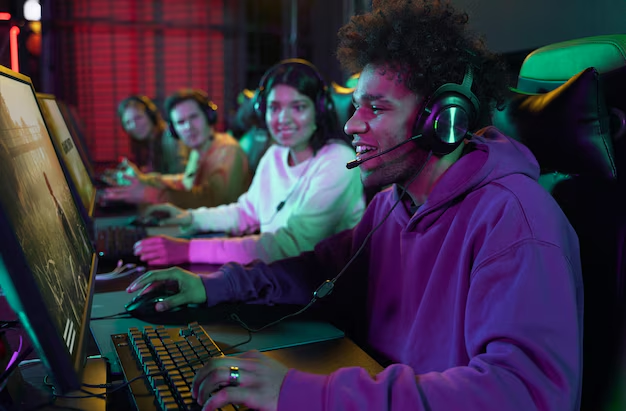Alien invasion games have always fascinated gamers across the globe. The thrill of battling extraterrestrial beings, defending Earth or exploring distant galaxies is a theme that has captivated the imagination of game developers and players alike. With advancements in technology, these games have evolved to offer more realistic and immersive experiences.
The advent of futuristic technology in gaming has revolutionized how we experience alien invasion games. High-definition graphics, advanced AI algorithms, virtual reality (VR), augmented reality (AR), cloud gaming and other technologies have significantly enhanced the gameplay experience.
High-definition graphics are at the forefront of this technological revolution. They provide stunning visual effects that make alien worlds come alive on screen with breathtaking detail. Whether it’s an interstellar spaceship or an alien creature, every element is meticulously designed to enhance realism and immersion.
Advanced AI algorithms also play a crucial role in modern alien invasion games. These algorithms control enemy behavior making them more unpredictable and challenging to defeat. They learn from players’ actions, adapt their strategies accordingly providing a dynamic gaming experience where no two encounters are exactly alike.
Virtual Reality (VR) takes immersion to another level by putting players directly into the game world. In VR-enabled alien invasion games, you don’t just control a character on screen; you become the character fighting off alien invasions first hand! Imagine physically dodging laser blasts or reaching out to operate an intergalactic weapon system – all from your living room!
Augmented Reality (AR), on the other hand, brings aliens into our world by superimposing digital images onto our physical environment through devices like smartphones or AR glasses. This creates unique gameplay opportunities where your backyard becomes an extraterrestrial battlefield!
Cloud gaming services allow players to enjoy high-quality alien invasion games without needing expensive hardware since game processing happens on remote servers instead of local devices. This means even complex games with high-resolution graphics can be played smoothly on average PCs or mobile devices.
Moreover, haptic technology, which creates a sense of touch through vibrations or motions, enhances the sensation of being in a game. This can be experienced when using VR controllers to swing an alien weapon or feeling the impact of an alien attack.
In conclusion, futuristic technology has taken alien invasion games to new heights. It has transformed them from simple 2D experiences into immersive multi-dimensional adventures. As technology continues to advance at an exponential rate, one can only imagine what future alien invasion games will look like. One thing is for sure: they will continue to captivate gamers’ imaginations and provide thrilling experiences for years to come.




